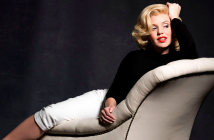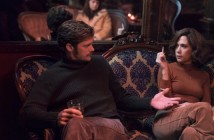Editor’s Notes: The Look of Silence is currently out in limited release in select cities. The film also opens in Toronto, Montreal, Vancouver, and Edmonton next Friday, July 24th.
The Look of Silence is director Joshua Oppenheimer’s second documentary film that takes on the heavy subject matter of the 1956-1966 Indonesian anti-communist genocide. As Oppenheimer has said the films can be viewed in any order, they accompany each other rather than act as a starting point and follow up. There’s no excuse to dive straight in with his latest if you missed out of the award winning The Act of Killing (2012) in the cinema. The Act of Killing was an Academy Award nominee amongst many other prestigious documentary nominations and I have nothing but similar hopes for The Look of Silence. In a very different sort of expose than on the genocide, I found it just as spellbinding and Oppenheimer’s team again blew my mind with the sheer power of their documentary filmmaking.
The Look of Silence is born out of son Adi’s quest to bring understanding and closure to his family after the graphic and brutal slaughter of his older brother Ramli.
When making The Act of Killing Oppenheimer and his largely anonymous listed team were asking the former death-squad leaders to re-enact their actions during the genocide. The majority of the feature took the very filmic forms of narrative constructed cinematic re-enactments and relying on the death-squad leaders’ preference to action and crime genre filmmaking. More impacting than seeing them constructing these scenes of course, were the off the project sequences where they openly and very enthusiastically demonstrated their actions for the cameras, as another more candid means of documenting their involvements. The Act of Killing didn’t focus as an unearthing of the facts of the losses this community have bared, but how open the death squad leaders were about detailing their involvement in often delighted graphic retellings.
While the filming was taking place, a close relationship between Oppenheimer and one family developed. The Look of Silence is born out of son Adi’s quest to bring understanding and closure to his family after the graphic and brutal slaughter of his older brother Ramli. Adi grew up long after his brother’s untimely death and knows of the pain his family suffered. As a travelling optometrist he has access to elderly locals with knowledge of the genocide and interviews them on the subject in the hope to unravel more truths about Ramli’s death. The Look of Silence is about Adi’s understanding of the events surrounding his brother’s death, and the family living with their loss, side by side with the murderers in the same village. It’s no so much focusing on why and how the death happened; it’s on dealing with what happened in the here and now. It’s about seeing the reactions, as much as it is about Adi’s experience of seeing the death squad leaders discussing their actions.
It’s a very open exploration that lets the filming events lead the way, rather than set up a predetermined structure or lineage.
Adi openly interviews and confronts the death squad leaders as they are known. Those filmed detailing his brother’s death and the leader that wrote a book with illustrations, almost gloating on the spectacles they beheld during the horrendous events. In certain situations, Oppenheimer invites the audience to ask the overwhelming question, where Adi’s courage comes from when he’s putting himself in seeming danger by tackling the issue. The inner strength Adi has is unbelievable and his decision to involve himself in the project is more than a brave one. Oppenheimer although deeply moved by and involved in the process of grief experienced by Adi and his family, does Adi’s present tale justice by demonstrating documentary ethics beyond the call of duty. In ensuring their safety, part of the project was securing a relocation of the family. In some scenes it’s obvious from the hostile reactions that the film won’t be dismissed easily.
Plenty of documentaries out there that take a historical convention and go for a factual representation, but for Oppenheimer this as more of an implied backdrop, happily lacking the overbearing narrative voice over to guide. It’s a very open exploration that lets the filming events lead the way, rather than set up a predetermined structure or lineage. It’s worth viewing even if your not hugely invested in seeing a film on such an intense subject, it’s cinematically beautiful. The close ups and the simple village life shots are deeply saturated in natural lighting and colour, giving a paradise contextualisation of the natural beauty of Indonesia. All the time, this only reinforces the genuinely bizarre happening of the genocide and what seems to be an otherwise peaceful village lifestyle.
I would change nothing in Oppenheimer’s project work and The Look of Silence is only testimony to what a passionate filmmaker he is. That’s often the most difficult thing about good documentary films though. They should challenge your perceptions and ignite your curiosity and there should always be questions that follow a viewing. The Look of Silence, for me at least, took a very specific angle of a wider subject area, narrowed in on it as needed but managed to keep me on my toes guessing why and how this was all happening. I can’t wait to see more from Oppenheimer, no matter what subject matter he takes next, or explores the same again in another way.
The Look of Silence is cinematically beautiful. The close ups and the simple village life shots are deeply saturated in natural lighting and colour, giving a paradise contextualisation of the natural beauty of Indonesia. All the time, this only reinforces the genuinely bizarre happening of the genocide and what seems to be an otherwise peaceful village lifestyle.




